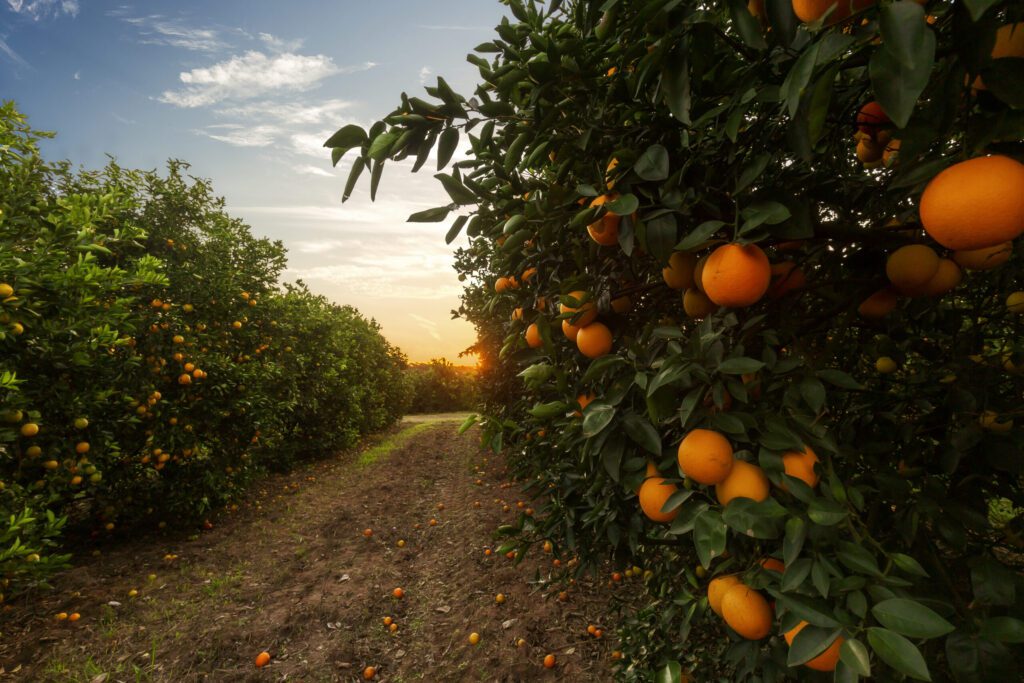Executive Director of CRDF Tweaks Approach to Research
by HEATHER MACHOVINA
Rick Dantzler, executive director of the Citrus Research and Development Foundation, recently spoke to a group of citrus growers from Highlands County about the future course of Florida citrus. Since 2009, CRDF has funded 462 projects and spent $165 million in an effort to keep the Florida citrus industry thriving and competitive through innovation.
“While we now know more about HLB than ever and several good things are in the works, we can’t act as though the research has been more successful than it has,” says Dantzler.
“The truth is that the most important metrics – production, the number of citrus acres, and the number of growers – are still going the wrong way, so we must do things differently, and we are.”
Some of the changes happening around CRDF may not seem grand, but they are big changes in the world of research funding. Other revisions underway are more substantive than procedural, like CRDF taking on the responsibility of conducting all last-stage field trials of the plant breeding programs they help fund.
“The point is we are going to get there even if that means breaking the mold,” Dantzler emphasizes.
Some promising work is being done with peptides to help control citrus greening and other plant pathogens. Every peptide does something different and provides different modes of action within the plants. So far, two peptides have shown hope in fighting citrus greening and increasing yields in HLB-infected trees.
The peptide by Elemental Enzymes, called Vismax peptide, is a foliar spray that causes the tree to attack the bacterial infection (HLB) as well as induces the tree to actually grow out of the disease. Vismax peptide only needs to be applied once every year in the spring as the trees flush, and it lasts through harvest. It has been proven positive in groves across Florida over four years of replicated grower trials in heavy HLB infected fields and has worked in generating more grower yield the same year over year.
Elemental Enzymes has recently been funded by CRDF for an expansion of its label study for other common citrus diseases. The Vismax peptide product should become registered with EPA in May 2022. It will be available through their partner, Nutrien, the largest ag retailer in the U.S., once it’s approved.
“We know we have a positive impact on other major diseases plaguing citrus growers besides HLB,” says Brian Thompson, CEO and co-founder of Elemental Enzymes. The company has also replicated trials in Brazil, Australia and South Africa on HLB and other citrus diseases.
Another promising peptide to help combat HLB in citrus is the finger lime peptide, but it is a more complicated story. Thus far, the only data we have seen from Dr. Hailing Jin, the researcher who discovered it, was derived from testing only greenhouse trees, at a low scale and in a very controlled environment in California. Furthermore, the company that owns the proprietary rights to the finger lime peptide, Invaio, is currently conducting a dozen or so field trials in Florida, but they are all by injection only.
“I have been in touch with Dr. Jin since the story of this first broke,” Dantzler says, “and we are considering funding additional research to see if the peptide can work by spraying.” As of now, the peptide would most likely be too expensive to spray, so it would have to be injected, making it a less ideal option for many growers.
Even though citrus numbers aren’t improving despite years of research, CRDF is making changes and creating new approaches to research. It has become much more discerning in what it funds. CRDF has gone from funding 34 percent of proposals received three years ago to 9 percent to 11 percent in the past two years.
CRDF works with the industry and the grower members on their committees and board to identify specific research topics. That information gets boiled down to a Request for Proposals (RFP), a formal document that is approved by the board. It is published and pre-proposals are solicited. The pre-proposals CRDF receives are sent to their Scientific Advisory Board (SAB), distinguished scientists from across the country who advise on scientific merit, and feedback from these scientists is shared with the members of their Research Management Committee (RMC). The RMC members then decide which pre-proposals they would like to receive a full proposal on, which are then sent to approximately 40 scientific advisors from across the country for confidential comment. These comments are sent to the SAB and shared with CRDF members to recommend to the board which proposals get funded.
“We don’t have the time or money to simply contribute to the library of knowledge,” Dantzler says.
“We must focus on deliverables for growers that help them bridge the period to when we have eradicated HLB or made it functionally irrelevant. … We are nearly out of time, so we need to be willing to take some chances.”

